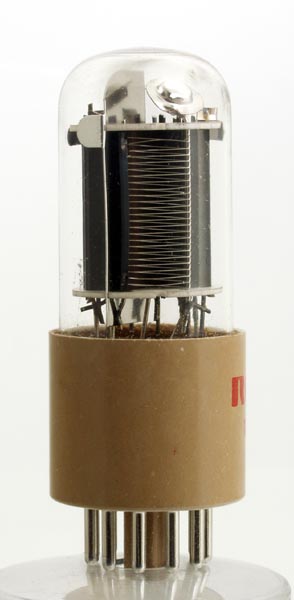
|
The 931B is a 9-stage, side-window photomultiplier tube intended for general purpose applications in low light level detection and measurement systems. It features a circular-cage with electrostatically focused dynodes, and fast time resolution characteristics. Typically, the 931B offers higher photo-cathode quantum efficiency, higher anode sensitivity, and lower dark current than the 931A. The 931B also features an anode current drift rating which limits variations in anode current to a maximum of 2%.Most recently (early 2000's) the 931 type of photomultiplier has been used by radio amateurs as the front end of sensitive optical receivers.The light enters this photomultiplier from the side onto the grid like structure. These grids are called dynodes and a photon falling on them will release secondary electrons. These electrons are accelerated into the next dynode and further electrons are released. In this way amplification factors of many thousands are possible.In this case with an anode voltage of 100 V and a cathode current of 0.025 mA the gain is 1,000,000 and the sensitivity is 10A/Lumen at a wavelength of 380 nM.The photomultiplier is a cold cathode device.The wide glass tube envelope is 28 mm in diameter and, excluding the base pins the length is 72 mm.Reference: Data-sheet. Type 931B was first introduced in 1950. See also 1950 adverts. |
Pin Connections
| 1 | 2 | 3 | 4 | 5 | 6 | 7 | 8 | 9 | 10 | 11 |  d1 | d2 | d3 | d4 | d5 | d6 | d7 | d8 | d9 | a | k |
|
|
Absolute Maximum Operating Conditions¶
| Va | 
| 1,250 |
|
Updated February 21, 2014.
|
|